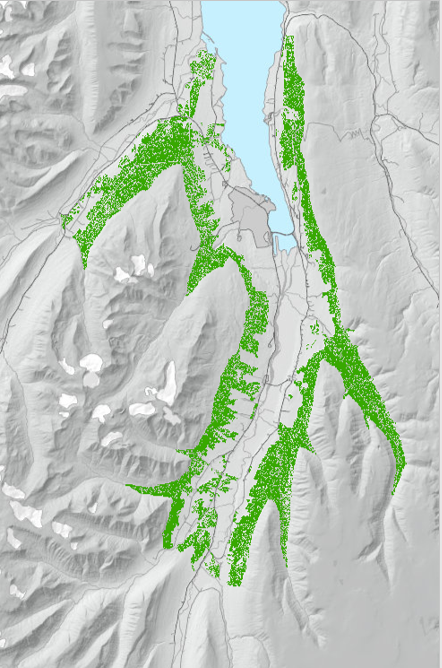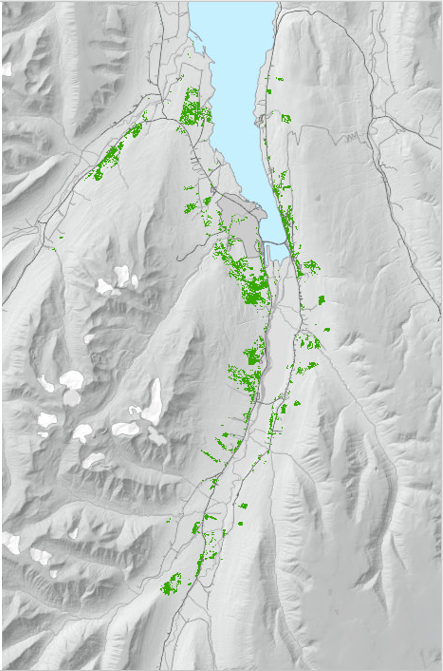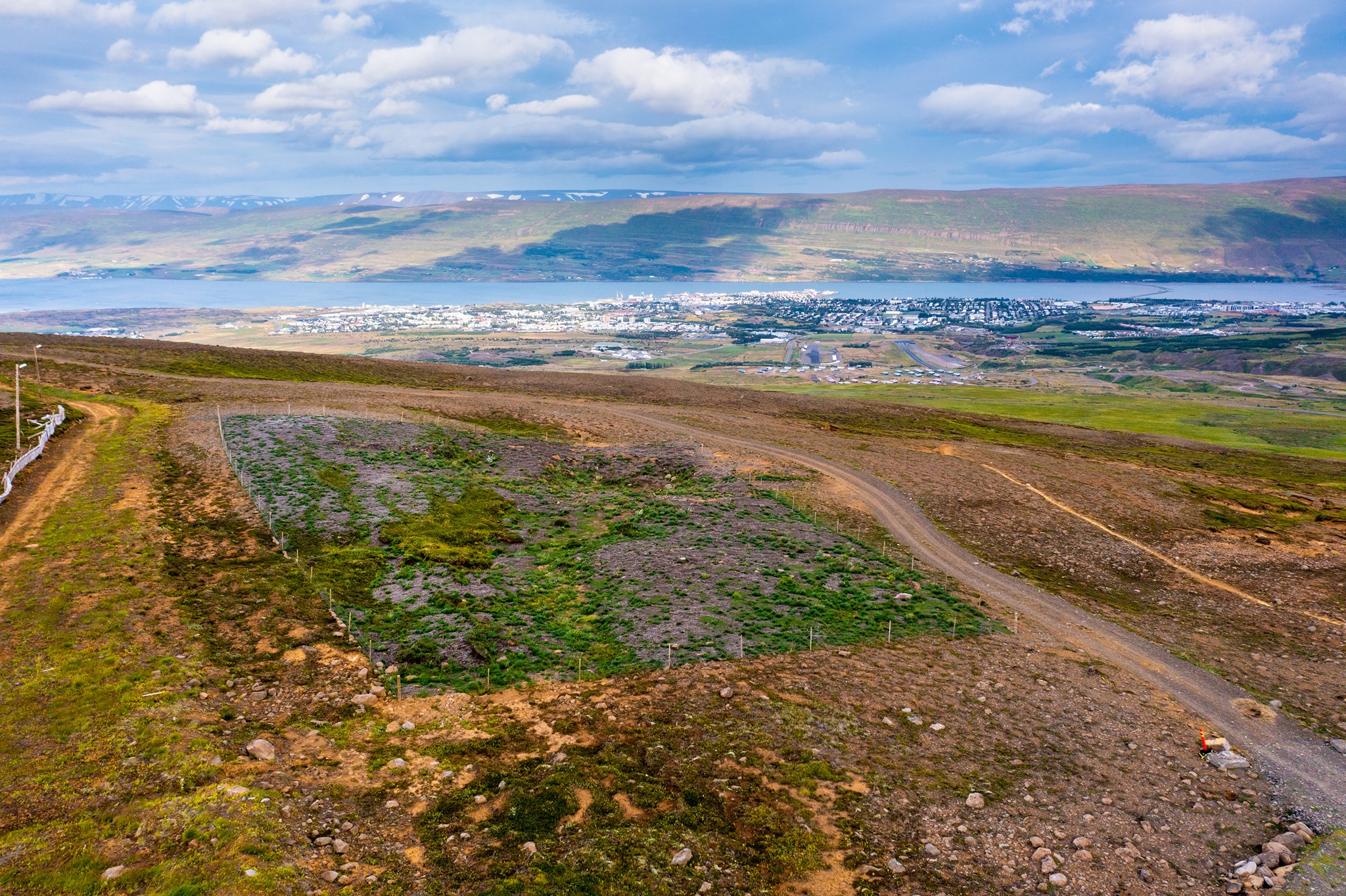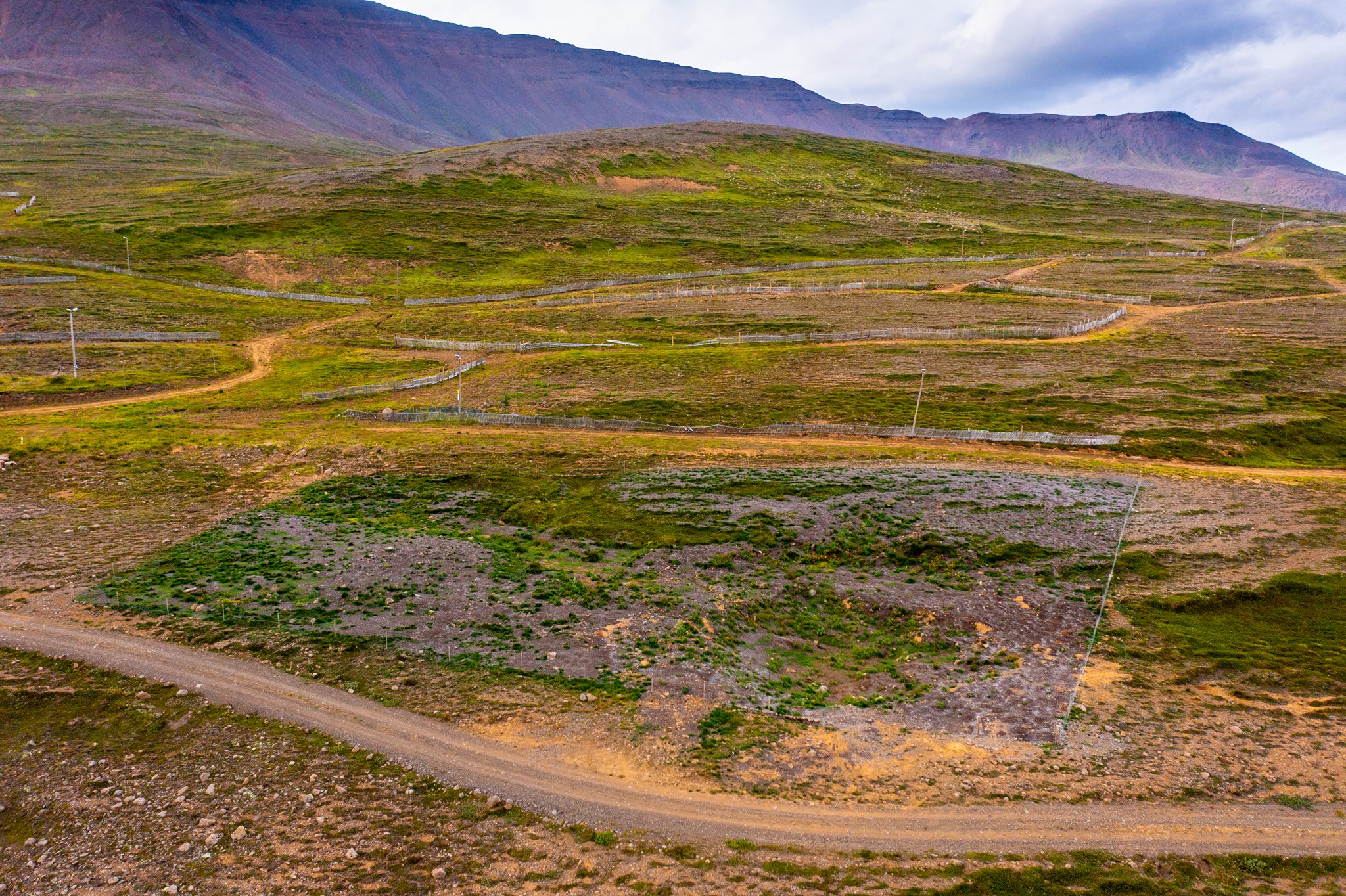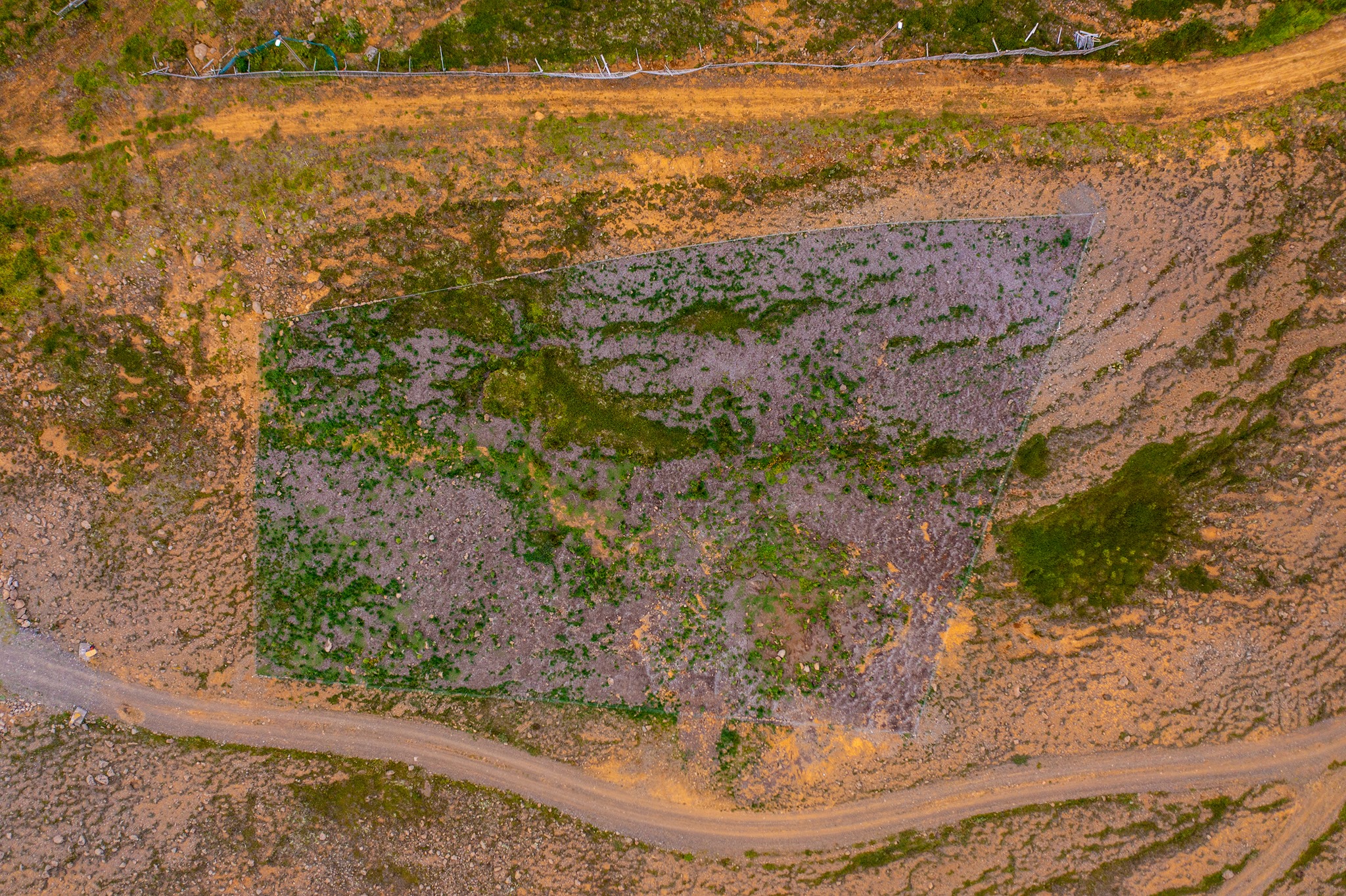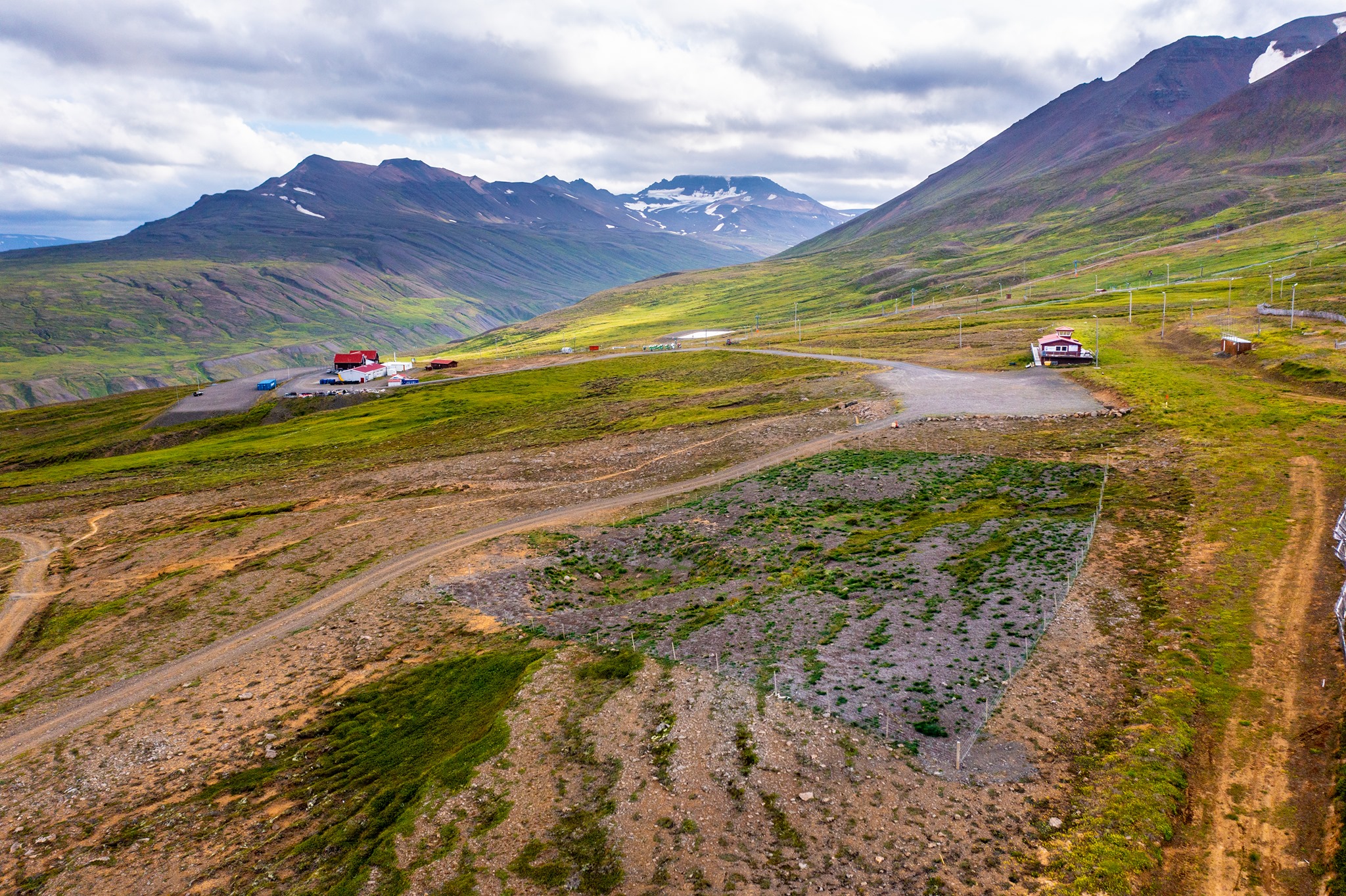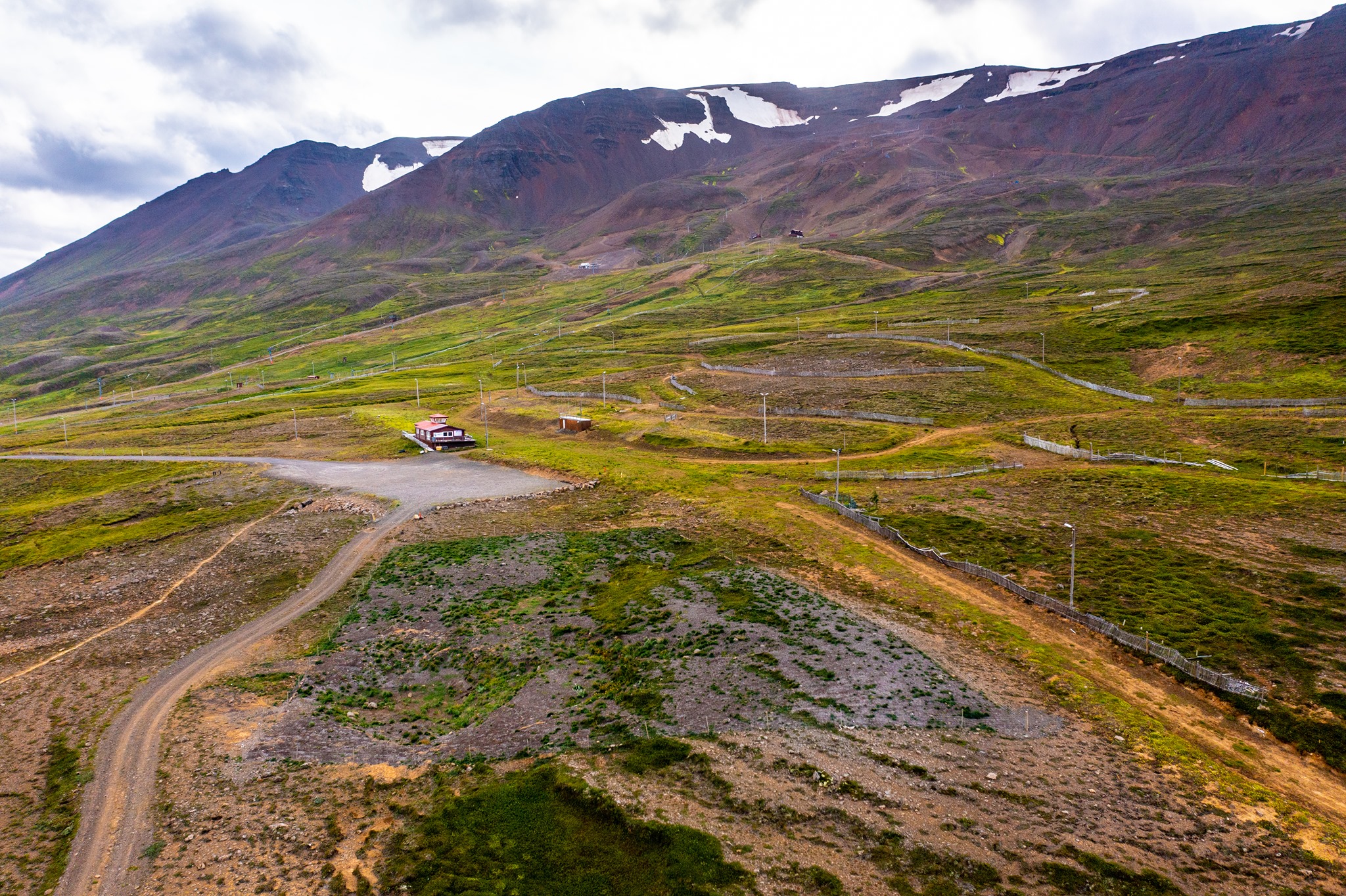Skógrækt
The Green Scarf - North of the river Glerá, there is a plan for the town of Akureyri set forward in 2018 by Johan Holst. The area is part of the towns main development plan for the years between 2018 and 2030. It is estimated that the area is above the built up area of the town and is around 700 hectares total. The area will be dedicated to outdoor recreational facilities and hiking trails.
Carbon Capture Plans
After planting it is estimated that, within the area, trees will grow to form a continuous forest 190 hectares in size. Assuming 7 tonnes of CO2 per hectare per year the area, when it is fully planted, will capture 1300 tonnes of CO2 per year. That is equivalent to about 600 cars that drive on average 15,000 km per year.
There are many goals of the Green Scarf:
Carbon Capture
The plan will grow fast-growing and long living plants that require little care. These plants will significantly increase carbon capture in the area and, as such, help achieve the town's goal of carbon neutrality.
Nature conservation
It is important to maintain the natural ecosystems of the forest, so there will be no planting done in swampy areas and berry fiels will be left alone.
Outdoor Recreation
Aðgengilegur og fjölbreyttur skógur þar sem slóða- og stígakerfi er greiðfært og nýtist bæði sem gönguleiðir og hjólaleiðir.
Landscape
Maintanance will be needed to maintain a beautiful view of the forest and within the forest. Planting will be done so that trees are scattered and soft lines are created between fields.
Soil Protection
It is most important to pay attention to the soil in the upper region as it is often of poor quality and eroded. Trees that are better aclimated to the poor soil conditions, such as larch and birch will be planted in these soils.
Timber
Lower in the region the land is fertile and is good for timber production. The majority of species planted there, then, would be aspen and spruce, which would be planted quite densely.
Planning area according to the main plan document.
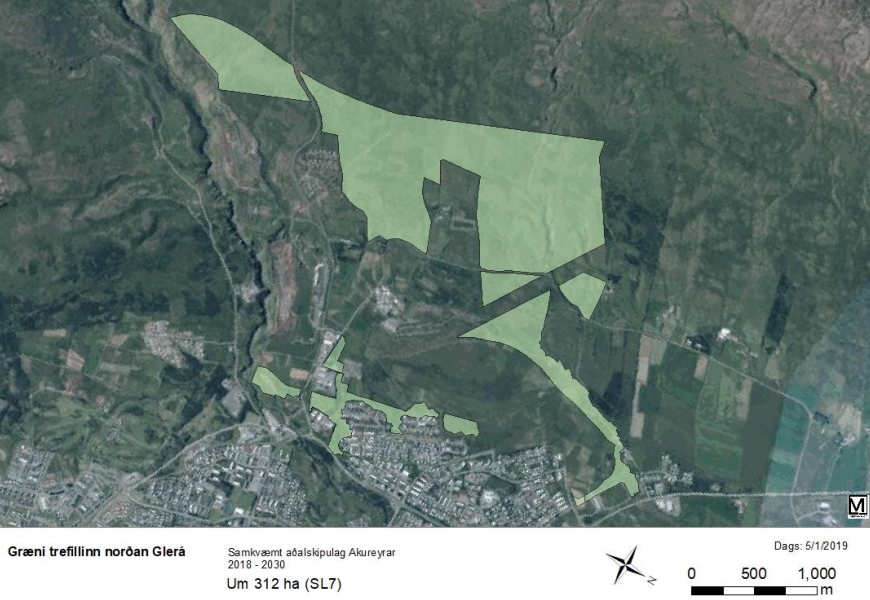
The "biggest forest in Iceland" is a project implemented by both Vistorka and the Icelandic Forestry Service.
Objectives
To draw up an outline for a forest at the bottom of Eyjafjörður that would be large enough to sequester all carbon emissions from the area. This plan is crucial in helping the Eyjafjörður region reach the government's goal of carbon neutrality by 2040.
Assumptions
The project proposal shows the likely amount of carbon that would be sequestered from the air were a forest to be grown in the middle of Eyjafjörður on the lands marked as grasslands (mólendi/graslendi) by NÍ. This means that the proposal's footprint does not include areas that are developed, fields (agriculture etc.), roads, powerlines, or national heritage sites.
The results/impact of the proposal should be viewed as a technical feasibility. The actual implementation of the proposal will depend heavily on the owners of the impacted land and changes in planning required by future events.
Main Takeaways/Impacts
Currently, forests in the interior of Eyjafjörður are over 2,000 ha in size and already sequester over 16,000 tonnes of CO2 per year.
The area (see assumptions) could expand by up to 11,400 hectares with the planting of 30 million plants.
This area would be the largest continuous forest in Iceland, which would be able to squester over 100,000 tonnes of CO2 per year.
Forests must be planted in 20% of the land below the 400m line to offset the emissions of the people living in the area.
Plananed Forest versus The Forest Today
Moltulundur is a joint project undertaken by Akureyri, Vistorka, and Moltu ehf. and is funded by the Ministry of the Environment. The foundation of Moltulundur is being laid around the ski area in Hlíðarfjall where an attempt to grow trees and replant will be undertaken in a sparse 500 meter area.
Carbfix
Forestry is not the only method Iceland uses to sequester carbon emissions from the atmosphere. The company Carbfix has succeeded in harnesssing the natural process, where carbon is deposited in the ground in a profitable and environmentally friendly way, to capture carbon from the atmosphere.
Carbon dioxide and other water-soluable gases (such as hydrogen and sulphide) are pumped down into the ground where they become rock within two years.
This method has been used in the operation of Hellisheiðarvirkjun and in 5 years it has reduced its operating emissions by a third.
Carbfix, Orka náttúrunnar (ON), and the Swiss company Climework have worked together on an experimental site at Hellisheiði. A second station is scheduled to open in 2021 in Orku náttúrunnar's Jarðhitagarður (geothermal park). The goal is for that station to capture 4,000 tonnes of CO2 per year.
Wetland restoration
Wetland restoration is one way to reduce greenhouse gas emissions. The Wetland Fund (Votlendissjóður), in cooperation with landowners, the state, municipalities, companies, non-profits and individuals, attempts to restore wetlands that had previously existed in Iceland.
Wetland restoration is one of the most powerful methods of counteracting CO2 emissions available to Icelanders. If all the ways that CO2 is released into the atmosphere in Iceland are taken into account, excluding international flights over the country, drained wetlands can be blamed for up to 60% of CO2 emissions in the country.
Carbon Iceland
Carbon Iceland is a company that intends to build a large air purifying station using a method developed by Canadian companay Carbon Engineering. There are plans for the air purifier to be built in an "ecological business park" by Húsavík. Carbon Iceland's goal is to capture 1,000,000 tonnes of CO2 per year with the "Direct Air Capture" technology and the carbon captured from this process will be used to create green fuels for ships and other forms of transportation. There are also plans to use this energy in the food industry.
It is hoped that production of this plant will begin in 2023 and complete in 2025.

